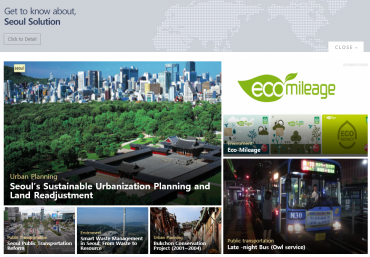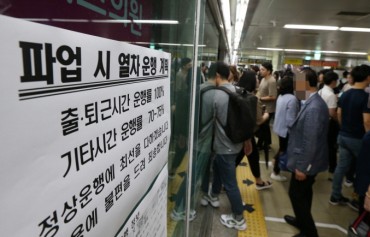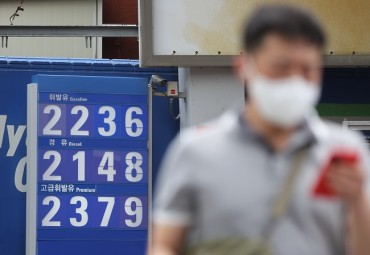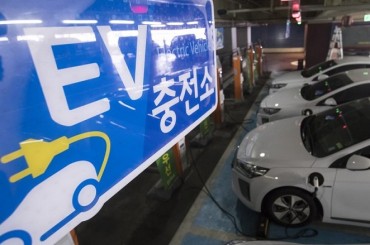
A medical worker guides visitors at a makeshift COVID-19 test center in central Seoul on April 11, 2021. (Yonhap)
SEOUL, April 11 (Korea Bizwire) — South Korea’s daily new coronavirus cases stayed in the 600s for the third consecutive day Sunday amid looming concerns over the fourth wave of the pandemic, with authorities struggling to contain sporadic cluster infections nationwide.
The country reported 614 more COVID-19 cases, including 594 local infections, raising the total caseload to 109,559, the Korea Disease Control and Prevention Agency (KDCA) said.
South Korea reported 677 new cases Saturday, which marked a slight rise from 671 tallied a day earlier. Last week, the daily cases even reached 700, the highest in three months.
The country added three more deaths from COVID-19, increasing the total to 1,768. The fatality rate came to 1.61 percent.
As of 6 p.m. Sunday, the country reported 485 new virus cases, up 52 from the same time the previous day, according to health authorities and provincial governments.
Of the total, 324 cases, or 66.8 percent, were reported in the greater Seoul area, including 160 in Gyeonggi Province and 149 in the capital.
Last week, South Korea decided to maintain the current level of social distancing rules through May 2, which was originally set to expire Sunday, while adding more strings to entertainment establishments.
The move came as South Korea aimed to roll out tailored antivirus measures for specific sectors, as raising the social distancing level on a nationwide scale could increase the economic burden on small shops.
The greater Seoul area, home to half of the nation’s 51.7 million population, is under the Level 2 distancing scheme, the third highest in the five-phase system. The rest is under Level 1.5, except for some municipalities that have adopted Level 2 measures.
Private gatherings of five or more people are banned nationwide.
Under the new guidelines that go into effect Monday, operations of entertainment establishments will be banned in the greater Seoul area and the southeastern port city of Busan.
Restaurants in the capital area are allowed to have sit-in customers through 10 p.m., but it may be adjusted to an hour earlier should daily cases rise further.
On Monday, the Seoul municipality under the leadership of new Mayor Oh Se-hoon plans to unveil the broad contours of its own social distancing scheme expected to include an easing of some curbs imposed by the state health authorities, according to officials.
KDCA Commissioner Jung Eun-kyeong noted the need to check whether Seoul’s own scheme is in line with the social distancing “principle.”
“The purpose of the authorities taking social distancing measures is to prevent the spread of the COVID-19 pandemic by reducing interpersonal contact,” she told an online briefing.
“There is a need to see whether (the Seoul municipality) has crafted guidelines in line with that social distancing principle.”
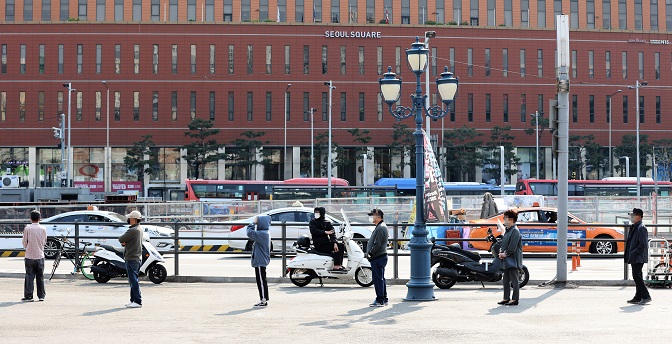
Citizens wait in line to receive COVID-19 tests at a makeshift clinic in central Seoul on April 11, 2021. (Yonhap)
Since the country started its vaccination program on Feb. 26, a total of 1,156,950 people have been given COVID-19 vaccine shots, including 8,710 the previous day.
Of the total, 236,336, or 20.4 percent, were 80 years old or older — the age group accounting for the highest percentage of those given the vaccine shots, followed by people in their 50s with 18.2 percent and those in their 40s with 13.6 percent.
AstraZeneca’s vaccine has been given to 916,780 people, while 300,680 received that of Pfizer. The figure accounts for roughly 2.2 percent of the total population.
Authorities said its survey among recipients of the first jab showed that AstraZeneca’s vaccine had an efficacy rate of 92.2 percent two weeks after inoculation, while that of Pfizer came to 100 percent.
The KDCA said 60,510 people have received two doses.
A total of 11,617 cases of side effects after vaccinations have been reported, up 18 from a day earlier, but 98.4 percent were mild symptoms, including muscle pain and fever.
A total of 44 deaths after vaccinations have been confirmed, according to the KDCA. Authorities, however, said the exact causes of the deaths remain unknown as they could not determine causality.
South Korea plans to vaccinate 12 million people by the end of June, with a goal of achieving herd immunity by November.
Of the newly confirmed locally transmitted cases, 211 came from Seoul, with Gyeonggi Province that surrounds the capital city accounting for 182.
Incheon, 40 kilometers west of Seoul, saw 16 new patients.
The southeastern port city of Busan reported 44 new cases, and North Jeolla Province added 40 more.
A gym from southern Seoul added seven more cases, raising the total caseload to 70.
A total of 381 patients were traced to a bar from Busan, up 19 from the previous day.
A church from South Chungcheong Province found 15 more cases, with the total tally reaching 50 so far.
Over the past two weeks, cluster infections accounted for 26.4 percent of the newly added cases, while transmission routes of 27.5 percent remained unknown.
“The rising number of cases with unknown transmission routes indicates that the virus is spreading faster than our epidemiological investigation,” Health Minister Kwon Deok-cheol said.
“This means that there are numerous hidden spreaders in local communities.”
Authorities also pointed out that the average daily number of new patients came to 580 over the past week.
There were 20 additional imported cases, raising the total to 7,824.
Arrivals from Indonesia and Bangladesh accounted for three cases each. The United States and Russia took up two cases each as well.
The number of seriously or critically ill COVID-19 patients was 105, down three from the previous day.
The total number of people released from quarantine after making full recoveries was 100,109, up 808 from a day earlier. Around 91.4 percent of the patients reported here have been cured.
South Korea has carried out 8,129,532 COVID-19 tests since January last year, including 22,902 from the previous day.
(Yonhap)



